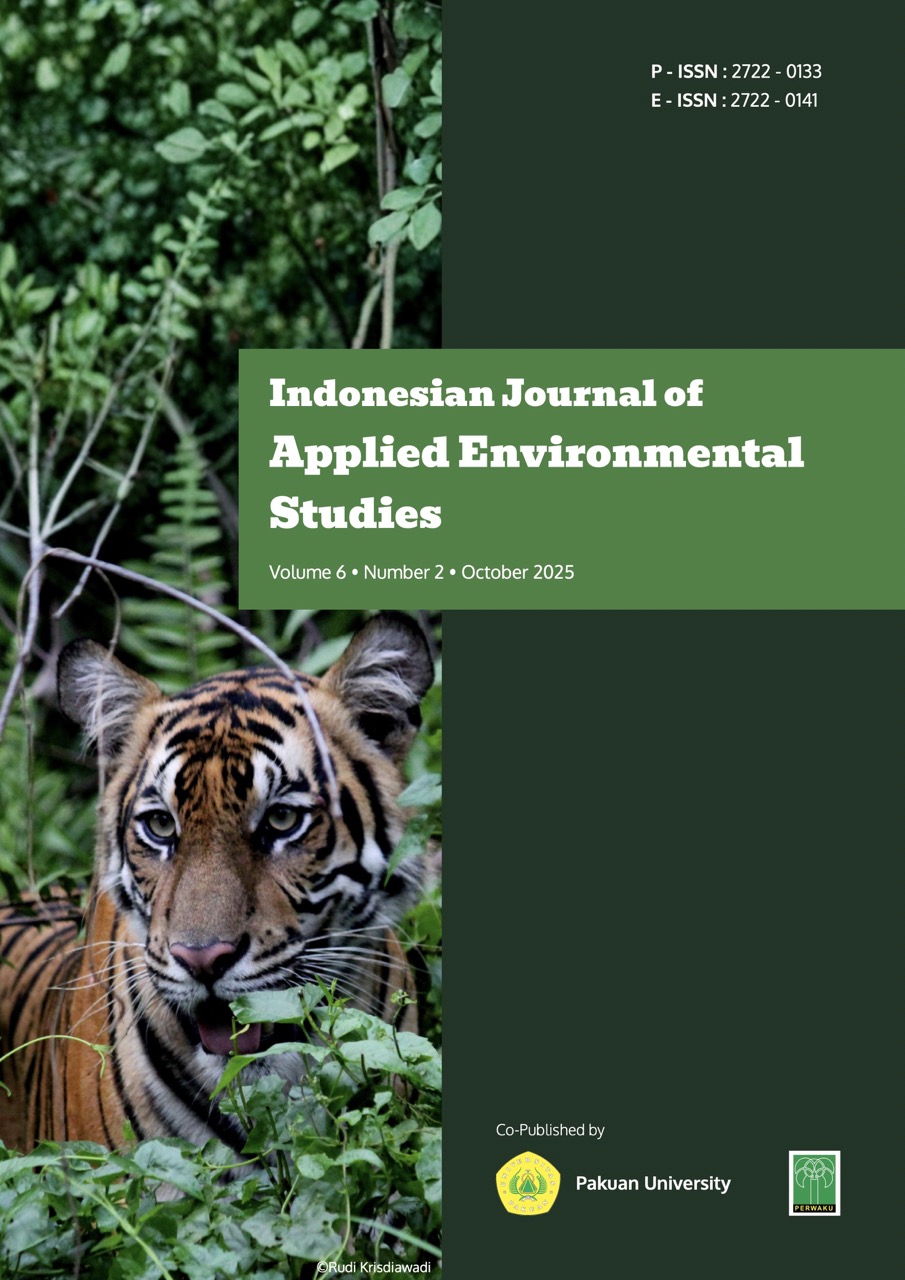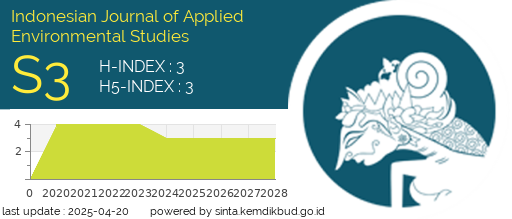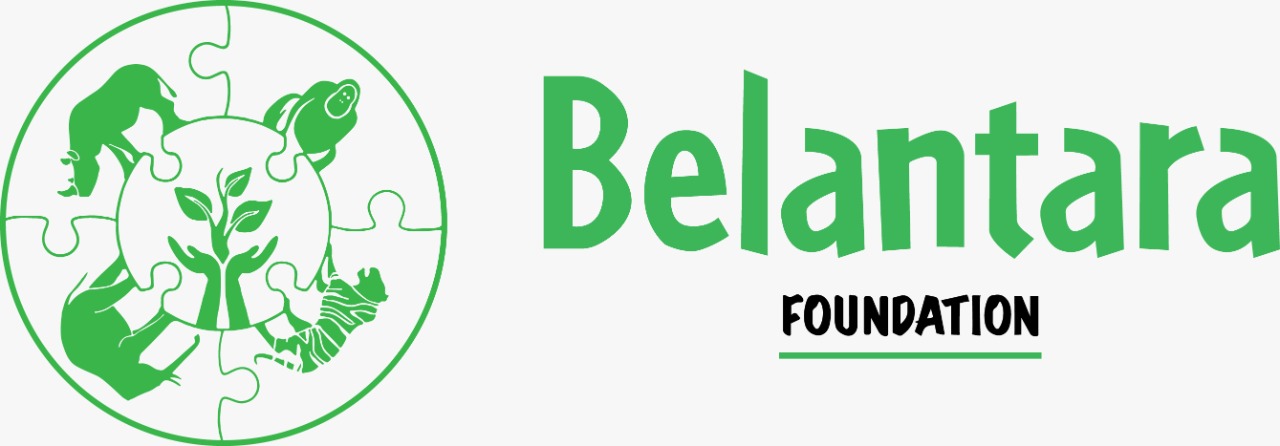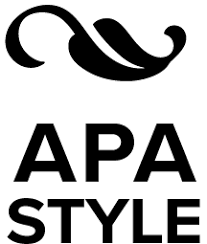Environmental and health risk assessment of heavy metal contamination in rice from Gashua, Yobe State, Nigeria
DOI:
https://doi.org/10.33751/injast.v6i2.13Kata Kunci:
Hazard quotient, heavy metals, ILCR, MP-AES, parboiled riceAbstrak
This study investigates heavy metal contamination in rice from Gashua, Yobe State, Nigeria—an important rice-producing area potentially affected by environmental pollution. Given the widespread consumption of rice as a dietary staple and the rising prevalence of kidney-related diseases in the region, the research aimed to quantify the concentrations of arsenic (As), cadmium (Cd), lead (Pb), and chromium (Cr) in rice and assess their associated health risks. Using a simple random sampling technique, 120 rice samples were collected, consisting of 90 paddy rice from four farms and 30 parboiled rice from Gashua Market. Samples were digested and analyzed using Microwave Plasma–Atomic Emission Spectrometry (MP-AES), and data were evaluated through one-way analysis of variance (ANOVA). The results showed a significant (P<0.05) variation in heavy metal concentrations among samples. Parboiled rice from Gashua Market contained the highest arsenic level (0.383 mg/kg), exceeding WHO and USEPA limits. Cadmium (0.0242 mg/kg) and lead (0.102 mg/kg) also surpassed permissible limits of 0.001 mg/kg and 0.0035 mg/kg, respectively. Hazard Quotient (HQ) values for children indicated low risk, with all values below the threshold of 1. However, in adults, the HQ value for chromium at Gashua Market (2.162) exceeded the safe limit, suggesting potential health risks. The Hazard Index (HI) for both adults and children was greater than 1, primarily due to elevated concentrations of arsenic and chromium, signaling possible non-carcinogenic effects. Incremental Lifetime Cancer Risk (ILCR) analysis further indicated an increased risk of cancer from prolonged exposure. In conclusion, rice grown and sold in Gashua is contaminated with heavy metals at levels posing both carcinogenic and non-carcinogenic health risks. These findings underscore the urgent need for continuous monitoring, stricter regulatory enforcement by agencies such as NAFDAC, and proactive public health interventions to ensure food safety and protect community health.
Referensi
Abdulaziz, M., Alshehri, A., Yadav, I. C., & Alqahtani, T. M. (2022). Pollution level and health risk assessment of heavy metals in ambient air and surface dust from Saudi Arabia: A systematic review and meta-analysis. Air Quality, Atmosphere & Health, 15(5), 799–810. https://doi.org/10.1007/s11869-022-01176-1
Abdullahi, S. M. (2017). Research methods and processes (1st ed.). Ahmadu Bello University Press Limited. ISBN 978-978-947-163-8.
Afzal, J., Saleem, M. H., Batool, F., Elyamine, A. M., Rana, M. S., Shaheen, A., El-Esawi, M. A., Tariq Javed, M., Ali, Q., & Arslan Ashraf, M. (2020). Role of ferrous sulfate (FeSO₄) in resistance to cadmium stress in two rice (Oryza sativa L.) genotypes. Biomolecules, 10(12), 1693. https://doi.org/10.3390/biom10121693
Agatha, A. S., Nur, S. Z., Jinap, S., Mohd, R. I., Soo, Y. L., & Ahmad, F. A. (2023). Quantitative analysis and human health risk assessment of heavy metals in paddy plants collected from Perak, Malaysia. Environmental Science and Pollution Research, 30(15), 43210–43222. https://doi.org/10.1007/s11356-023-25967-4
Ahmad, S. R., & Qadir, O. K. (2023). Determination of some heavy metals in imported rice grains (Oryza sativa) available in Sulaymaniyah market and evaluation of their health risk assessment. Zanco Journal of Pure and Applied Sciences, 35(1), 88–95. https://doi.org/10.21271/ZJPAS.35.1.9
Al-Saleh, I., & Abduljabbar, M. J. (2017). Heavy metals (lead, cadmium, methylmercury, arsenic) in commonly imported rice grains (Oryza sativa) sold in Saudi Arabia and their potential health risk. International Journal of Hygiene and Environmental Health, 220(7), 1168–1178. https://doi.org/10.1016/j.ijheh.2017.06.001
Alaa, A. C., Ahmed, M. S., & Abeer, S. A. (2022). Determination of heavy metals in irrigation water, soil, paddy, and produced rice of some paddy fields of Iraq. Iraqi Journal of Science, 63(11), 4637–4649. https://doi.org/10.24996/ijs.2022.63.11.2
Amir, R. M., Randhawa, M. A., Sajid, M. W., Nadeem, M., Ahmad, A., & Wattoo, F. M. (2019). Evaluation of various soaking agents as a novel tool for heavy metal residues mitigation from spinach. Food Science and Technology (Campinas), 39(1), 176–180. https://doi.org/10.1590/fst.00118
Amoo, A. O., Adeleye, A. O., Bate, G. B., Asaju, C. I., Isiaq, S. M., & Ilyasu, Y. A. (2021). Water quality analyses: Evidence from River Gashua and some selected groundwater sources in Gashua, Nigeria. Indonesian Journal of Social and Environmental Issues (IJSEI), 2(3), 2722–1369. https://ojs.literacyinstitute.org/index.php/ijsei
Amshi, S. A., Iliya, I., & Adamu, A. (2019). Chronic kidney disease associated with heavy metals (Cr, Pb, Cd) analyzed from irrigation water of Gashua, Yobe, Nigeria. IOSR Journal of Applied Chemistry, 12(5), 43–48. https://www.iosrjournals.org
Arcella, D., Cascio, C., & Gómez Ruiz, J. Á. (European Food Safety Authority [EFSA]). (2021). Chronic dietary exposure to inorganic arsenic. EFSA Journal, 19(1), e06380. https://doi.org/10.2903/j.efsa.2021.6380
Association of Official Agricultural Chemists (AOAC). (2010). Standards for analysing heavy metals in food and agricultural products using various techniques. AOAC International.
Bakshi, M., & Abhilash, P. C. (2020). Nanotechnology for soil remediation: Revitalizing the tarnished resource. In Nano-materials as photocatalysts for degradation of environmental pollutants (pp. 345–370). Elsevier. https://doi.org/10.1016/B978-0-12-818598-8.00017-1
Bashir, M. S., Auwal, M. A., Sulaiman, B. A., Uzoamaka, V. E., Abdullahi, M. G., Oluyinka, O. A., & Auwal, A. (2024). Heavy metal contamination in medicinal plants: Assessing carcinogenic and non-carcinogenic health risks. Discover Environment. https://doi.org/10.1007/s44202-024-00061-9
Behrouzi, R., Marhamatizadeh, M. H., Shoeibi, S., Razavilar, V., & Rastegar, H. (2018). Effects of pre-cooking process with acetic acid and citric acid on the lead (Pb) concentration in rice. Journal of Food and Nutrition Research, 6(1), 56–61. https://doi.org/10.12691/jfnr-6-1-9
Cao, S., Duan, X., Zhao, X., Wang, B., Ma, J., Fan, D., Sun, C., He, B., Wei, F., & Jiang, G. (2015). Health risk assessment of various metal(loid)s via multiple exposure pathways on children living near a typical lead-acid battery plant, China. Environmental Pollution, 200, 16–23. https://doi.org/10.1016/j.envpol.2015.02.017
Census. (2006). Federal Republic of Nigeria official gazette (Vol. 96, Government Notice No. 2). Federal Government Printer, Abuja (FGP 16/22009/10,000 [OL 02]).
Chew, J. Y., Cheng, W. H., Wong, L. S., Ong, G. H., Subramaniam, G., & Barasarathi, J. (2023). Assessment of heavy metal content and consumption risks at selected paddy field in Malaysia: A review. Journal of Experimental Biology and Agricultural Sciences, 11(5), 791–799. https://doi.org/10.18006/2023.11(5).791.799
Chyad, A. A., Saeed, A. M., & Alhendi, A. S. (2022). Determination of heavy metals in irrigation water, soil, paddy, and produced rice of some paddy fields of Iraq. Iraqi Journal of Science, 63(11), 4637–4649. https://doi.org/10.24996/ijs.2022.63.11.2
Deng, F., Yu, M., Martinoia, E., & Song, W.-Y. (2019). Ideal cereals with lower arsenic and cadmium by accurately enhancing vacuolar sequestration capacity. Frontiers in Genetics, 10, 322. https://doi.org/10.3389/fgene.2019.00322
Eske, J. (2020). Copper toxicity: Symptoms and treatment. Medical News Today. https://www.medicalnewstoday.com/articles/copper-toxicity
Fan, Y., Zhu, T., Li, M., He, J., & Huang, R. (2017). Heavy metal contamination in soil and brown rice and human health risk assessment near three mining areas in central China. Journal of Healthcare Engineering, 2017, 4124302. https://doi.org/10.1155/2017/4124302
Fayiga, A. O., & Saha, U. K. (2016). Arsenic hyperaccumulating fern: Implications for remediation of arsenic-contaminated soils. Geoderma, 284, 132–143. https://doi.org/10.1016/j.geoderma.2016.09.003
Flatman, G. T., & Yfantis, A. A. (1984). Geostatistical strategy for soil sampling: The survey and the census. Environmental Monitoring and Assessment, 4, 335–349. https://doi.org/10.1007/BF00394172
Gao, J., Zhang, D., Uwiringiyimana, E., et al. (2021). Evaluation of trace element contamination and health risks of medicinal herbs collected from unpolluted and polluted areas in Sichuan Province, China. Biological Trace Element Research, 199, 4342–4352. https://doi.org/10.1007/s12011-020-02539-4
Genchi, G., Sinicropi, M. S., Lauria, G., Carocci, A., & Catalano, A. (2020). The effects of cadmium toxicity. International Journal of Environmental Research and Public Health, 17(11), 3782. https://doi.org/10.3390/ijerph17113782
Gerba, C. P., Brusseau, M. L., & Pepper, I. L. (2019). Risk assessment. In I. L. Pepper, C. P. Gerba, & M. L. Brusseau (Eds.), Environmental and pollution science (3rd ed.). Elsevier.
Gunduz, S., & Akman, S. (2013). Investigation of arsenic and cadmium contents in rice samples in Turkey by electrothermal atomic absorption spectrometry. Food Analytical Methods, 1–4. https://doi.org/10.1007/s12161-013-9588-6
Guo, Y., Huang, M., You, W., Cai, L., Hong, Y., Xiao, Q., Zheng, X., & Lin, R. (2022). Spatial analysis and risk assessment of heavy metal pollution in rice in Fujian Province, China. Frontiers in Environmental Science, 10, 1082340. https://doi.org/10.3389/fenvs.2022.1082340
Hasan, G. M. M. A., Das, A. K., & Satter, M. A. (2022). Accumulation of heavy metals in rice (Oryza sativa L.) grains cultivated in three major industrial areas of Bangladesh. Journal of Environmental and Public Health, 2022, 1836597. https://doi.org/10.1155/2022/1836597
Hashem, I. A., Abbas, A. Y., El-Hamed, A. E.-N. H. A., Salem, H. M., El-Hosseiny, O. E., Abdel-Salam, M. A., Saleem, M. H., Zhou, W., & Hu, R. (2020). Potential of rice straw biochar, sulfur, and ryegrass (Lolium perenne L.) in remediating soil contaminated with nickel through irrigation with untreated wastewater. PeerJ, 8, e9267. https://doi.org/10.7717/peerj.9267
Huo, Y., Du, H., Xue, B., Niu, M., & Zhao, S. (2016). Cadmium removal from rice by separating and washing protein isolate. Journal of Food Science, 81(6), 1–9. https://doi.org/10.1111/1750-3841.13323
Ihedioha, J. N., & Okoye, C. O. B. (2021). Environmental pollution and associated human health risk assessment of trace metals in soil and food crops around lead-contaminated areas in Nigeria. Environmental Science and Pollution Research, 28(18), 23100–23114. https://doi.org/10.1007/s11356-021-15569-9
Jarjees, F. Z., & Darwesh, D. A. (2023). Heavy metals concentration in commercial rice available at Erbil City markets, Iraq and soaking effects. Baghdad Science Journal, 20(3 Suppl.), 967–978. https://doi.org/10.21123/bsj.2023.8176
Jarjees, F. Z., & Darwesh, D. A. (2024). Human health risk assessment of toxic heavy metals in commercially available rice at local markets in Erbil, within the Kurdistan Region of Iraq. Zanco Journal of Pure and Applied Sciences, 36(3), 95–108. https://doi.org/10.21271/ZJPAS.36.3.9
Jarjees, J. O., Omokpariola, D. O., & Omokpariola, E. C. (2022). Risk assessment of polycyclic aromatic hydrocarbons and total petroleum hydrocarbons in oilfield produced water and sea water at Gulf of Guinea oilfield, Nigeria. Advanced Journal of Chemistry – Section B, 3(1), 68–85. https://doi.org/10.22034/ajcb.2021.121909
Javed, M. T., Saleem, M. H., Aslam, S., Rehman, M., Iqbal, N., Begum, R., Ali, S., Alsahli, A. A., Alyemeni, M. N., & Wijaya, L. (2020). Elucidating silicon-mediated distinct morpho-physio-biochemical attributes and organic acid exudation patterns of cadmium stressed Ajwain (Trachyspermum ammi L.). Plant Physiology and Biochemistry, 157, 23–37. https://doi.org/10.1016/j.plaphy.2020.05.036
Kamani, H., Mirzaei, N., Ghaderpoori, M., Bazrafshan, E., Rezaei, S., & Mahvi, A. H. (2018). Concentration and ecological risk of heavy metal in street dusts of Eslamshahr, Iran. Human and Ecological Risk Assessment: An International Journal, 24(4), 961–970. https://doi.org/10.1080/10807039.2017.1403282
Kelle, H. I., Ogoko, E. C., Achem, D., & Ayotunde, O. S. (2020). Health risk assessment of heavy metals in some rice brands imported into Nigeria. Communications in Physical Sciences, 5(2), 210–222.
Kelle, H. I., Ogoko, E. C., Udeozo, P. I., Achem, D., & Otumala, J. O. (2021). Health risk assessment of exposure to heavy metals in rice grown in Nigeria. The Pacific Journal of Science and Technology, 22(1), 262–270.
Khalef, R. N., Hassan, A. I., & Saleh, H. M. (2022). Heavy metal’s environmental impact. In H. M. Saleh & A. I. Hassan (Eds.), Environmental impact and remediation of heavy metals. IntechOpen. https://doi.org/10.5772/intechopen.103907
Khan, Z. I., Ugulu, I., Sahira, S., Mehmood, N., Ahmad, K., Bashir, H., & Dogan, Y. (2020). Human health risk assessment through the comparative analysis of diverse irrigation regimes for Luffa cylindrica (L.) Roem. Journal of Water, Sanitation and Hygiene for Development, 10(2), 249–261. https://doi.org/10.2166/washdev.2020.107
Khan, Z. I., Ugulu, I., Umar, S., Ahmad, K., Mehmood, N., Ashfaq, A., Bashir, H., & Sohail, M. (2018). Potential toxic metal accumulation in soil, forage, and blood plasma of buffaloes sampled from Jhang, Pakistan. Bulletin of Environmental Contamination and Toxicology. https://doi.org/10.1007/s00128-018-2353-9
Khan, Z. I., Ugulu, I., Zafar, A., Mehmood, N., Bashir, H., Ahmad, K., & Sana, M. (2021). Biomonitoring of heavy metals accumulation in wild plants growing at Soon Valley, Khushab, Pakistan. Pakistan Journal of Botany, 53, 247–252.
Khanam, R., Kumar, A., Nayak, A. K., Shahid, M., Tripathi, R., Vijayakumar, S., Bhaduri, D., Kumar, U., Mohanty, S., & Panneerselvam, P. (2020). Metal(loid)s (As, Hg, Se, Pb, and Cd) in paddy soil: Bioavailability and potential risk to human health. Science of the Total Environment, 699, 134330. https://doi.org/10.1016/j.scitotenv.2019.134330
Kimmage, K. (2012). Wetland agricultural production and river basin development in the Hadejia Jamaare Valleys, Nigeria. The Geographical Journal, 159(3), 1–10.
Kohzadi, S., Shahmoradi, B., & Ghaderi, E. (2019). Concentration, source, and potential human health risk of heavy metals in commonly consumed medicinal plants. Biological Trace Element Research, 187(1), 41–50. https://doi.org/10.1007/s12011-018-1357-3
Kubang Kerian Kelantan Malaysia: Unit of Biostatistics & Research Methodology, School of Medical Sciences, Universiti Sains Malaysia. (2015). Random Sampling Generator Using Microsoft Excel (Version 4.0) [Computer software].
Muhammad, A. S. (2017). Research methods and processes (1st ed., pp. 77–78). Ahmadu Bello University Press Limited. ISBN 978-978-947-163-8
Neisi, A., Farhadi, M., Angali, K. A., & Sepahvand, A. (2024). Health risk assessment for consuming rice, bread, and vegetables in Hoveyzeh city. Toxicology Reports, 12, 260 – 265. https://doi.org/10.1016/j.toxrep.2024.02.003
Nishijo, M., Nakagawa, H., Suwazono, Y., Nogawa, K., & Kido, T. (2017). Causes of death in patients with Itai-itai disease suffering from severe chronic cadmium poisoning: A nested case–control analysis of a follow-up study in Japan. BMJ Open, 7(7), e015694. https://doi.org/10.1136/bmjopen-2016-015694
Nnorom, I. C., & Osibanjo, O. (2022). Ambient air quality and associated human health risk in selected urban centers of Nigeria. Air Quality, Atmosphere & Health, 15(3), 455–466. https://doi.org/10.1007/s11869-022-01176-1
Oberoi, S., Devleesschauwer, B., Gibb, H. J., & Barchowsky, A. (2019). Global burden of cancer and coronary heart disease resulting from dietary exposure to arsenic, 2015. Environmental Research, 171, 185–192. https://doi.org/10.1016/j.envres.2019.01.025
Okechukwu, V. U., Omokpariola, D. O., Onwukeme, V. I., Nweke, E. N., & Omokpariola, P. L. (2021). Pollution investigation and risk assessment of polycyclic aromatic hydrocarbons in soil and water from selected dumpsite locations in Rivers and Bayelsa State, Nigeria. Environmental Analysis Health and Toxicology, 36(4), e2021023. https://doi.org/10.5620/eaht.2021023
Omokpariola, J. O., Omokpariola, D. O., & Omokpariola, E. C. (2022). Risk assessment of polycyclic aromatic hydrocarbons and total petroleum hydrocarbons in oilfield produced water and sea water at Gulf of Guinea oilfield, Nigeria. Advances in Journal of Chemistry – Section B, 3(1), 68–85. https://doi.org/10.22034/ajcb.2021.121909
Opara, I. J., & Ntol, S. N. (2023). Comparative studies of four locally produced rice in Wukari and an imported brand based on their proximate, vitamin, mineral composition, and heavy metal contamination. British Journal of Multidisciplinary and Advanced Studies: Sciences, 4(1), 21–32. https://doi.org/10.37745/bjmas.2022.0097
Ozbek, N., Tinas, H., & Atespare, A. E. (2019). A procedure for the determination of trace metals in rice varieties using microwave induced plasma atomic emission spectrometry. Microchemical Journal, 144, 474–478. https://doi.org/10.1016/j.microc.2018.09.019
Parvez, M. (2022). Heavy metals levels and associated health risk assessment of Euphorbia granulata Forssk. Environmental Science and Pollution Research, 29, 1998–2008. https://doi.org/10.1007/s11356-021-15569-9
Proshad, R., Kormoker, T., Islam, M. S., & Chandra, K. (2019). Potential health risk of heavy metals via consumption of rice and vegetables grown in the industrial areas of Bangladesh. Human and Ecological Risk Assessment: An International Journal, 25(7), 1–23. https://doi.org/10.1080/10807039.2018.1546114
Qian, Y., Chen, C., Zhang, Q., Li, Y., & Chen, Z. (2010). Concentrations of cadmium, lead, mercury, and arsenic in Chinese market milled rice and associated population health risk. Food Control, 21(12), 1757–1763. https://doi.org/10.1016/j.foodcont.2009.08.005
Rahimzadeh, M. R., Rahimzadeh, M. R., Kazemi, S., & Moghadamnia, A. (2017). Cadmium toxicity and treatment: An update. Caspian Journal of Internal Medicine, 8(3), 135–145. https://doi.org/10.22088/cjim.8.3.135
Rai, P. K., Lee, S. S., Zhang, M., Tsang, Y. F., & Kim, K. H. (2019). Heavy metals in food crops: Health risks, fate, mechanisms, and management. Environment International, 125, 365–385. https://doi.org/10.1016/j.envint.2019.01.067
Rehman, A. U., Nazir, S., Irshad, R., Tahir, K., Rehman, K. U., Islam, R. U. I., & Wahab, Z. (2021). Toxicity of heavy metals in plants and animals and their uptake by magnetic iron oxide nanoparticles. Journal of Molecular Liquids, 321, 114455. https://doi.org/10.1016/j.molliq.2020.114455
Rehman, M., Liu, L., Wang, Q., Saleem, M. H., Bashir, S., Ullah, S., & Peng, D. (2019). Copper environmental toxicology, recent advances, and future outlook: A review. Environmental Science and Pollution Research, 26, 18003–18016. https://doi.org/10.1007/s11356-019-05171-4
Saleem, M. H., Ali, S., Rehman, M., Rana, M. S., Rizwan, M., Kamran, M., Imran, M., Riaz, M., Soliman, M. H., & Elkelish, A. (2020). Influence of phosphorus on copper phytoextraction via modulating cellular organelles in two jute (Corchorus capsularis L.) varieties grown in a copper mining soil of Hubei Province, China. Chemosphere, 248, 126032. https://doi.org/10.1016/j.chemosphere.2020.126032
Saleem, M. H., Fahad, S., Khan, S. U., Din, M., Ullah, A., El Sabagh, A., Hossain, A., Llanes, A., & Liu, L. (2019). Copper-induced oxidative stress, initiation of antioxidants and phytoremediation potential of flax (Linum usitatissimum L.) seedlings grown under the mixing of two different soils of China. Environmental Science and Pollution Research, 27, 5211–5221. https://doi.org/10.1007/s11356-019-07118-3
Saleh, A., & Ahmed, A. (2019). Solid waste management practice and challenges in Gashua, Yobe State, Nigeria. Nigerian Journal of Environmental Science and Technology (NIJEST), 3(2), 298–303. https://doi.org/10.36263/nijest.2019.02.0139
Sall, M. L., Diaw, A. K. D., Gningue-Sall, D., et al. (2020). Toxic heavy metals: Impact on the environment and human health, and treatment with conducting organic polymers—A review. Environmental Science and Pollution Research, 27, 29927–29942. https://doi.org/10.1007/s11356-020-09354-3
Shahriar, S. M. S., Munshi, M., Hossain, M. S., Zakir, H. M., & Salam, S. M. A. (2023). Risk assessment of selected heavy metals contamination in rice grains in the Rajshahi city of Bangladesh. Journal of Engineering Science, 14(1), 29–41. https://doi.org/10.3329/jes.v14i1.67633
Shahriar, S., Paul, A. K., & Rahman, M. M. (2022). Removal of toxic and essential nutrient elements from commercial rice brands using different washing and cooking practices: Human health risk assessment. International Journal of Environmental Research and Public Health, 19(5), 2582. https://doi.org/10.3390/ijerph19052582
Shakerian, A., Rahimi, E., & Ahmadi, M. (2012). Cadmium and lead content in several brands of rice grains (Oryza sativa) in central Iran. Toxicology and Industrial Health, 28(10), 955–960. https://doi.org/10.1177/0748233711430979
Sharafati Chaleshtori, F., Rafieian Kopaei, M., & Sharafati Chaleshtori, R. (2016). A review of heavy metals in rice (Oryza sativa) of Iran. Toxin Reviews, 35(3–4), 1–8. https://doi.org/10.1080/15569543.2016.1252932
Shi, Z., Carey, M., Meharg, C., Williams, P. N., & Signes-Pastor, A. J. (2020). Rice grain cadmium concentrations in the global supply-chain. Exposure and Health, 12, 869–876. https://doi.org/10.1007/s12403-020-00349-6
Shrestha, S., & Kazama, F. (2016). Human and ecological risk assessment of heavy metals in urban soils and road dust in Kathmandu, Nepal. Human and Ecological Risk Assessment: An International Journal, 22(4), 936–952. https://doi.org/10.1080/10807039.2015.1133241
Sibuar, A. A., Zulkafflee, N. S., Selamat, J., Ismail, M. R., Lee, S. Y., & Abdull Razis, A. F. (2022). Quantitative analysis and human health risk assessment of heavy metals in paddy plants collected from Perak, Malaysia. International Journal of Environmental Research and Public Health, 19(2), 731. https://doi.org/10.3390/ijerph19020731
Soltan, M.-E., Al-Ayed, A., & Ismail, M. (2020). Evaluation of the concentrations of some metallic elements in the fallen dust extractants on the Ar Rass city, Qassim region, KSA. International Journal of Environment and Analytical Chemistry. https://doi.org/10.1080/03067319.2020.1811264
Sun, J., Wang, J., & Feng, Y. (2023). Heavy metals in indoor dust in China: Occurrence, source, and health risk. Current Pollution Reports, 9, 798–807. https://doi.org/10.1007/s40726-023-00274-7
Tariq, F., Wang, X., Saleem, M. H., Khan, Z. I., Ahmad, K., Malik, I. S., Munir, M., Mahpara, S., Mehmood, N., & Ahmad, T. (2021). Risk assessment of heavy metals in Basmati rice: Implications for public health. Sustainability, 13(15), 8513. https://doi.org/10.3390/su13158513
Tatah-Mentan, M., Nyachoti, S., Scott, L., Phan, N., Okwori, F. O., Felemban, N., & Godebo, T. R. (2020). Toxic and essential elements in rice and other grains from the United States and other countries. International Journal of Environmental Research and Public Health, 17(21), 8128. https://doi.org/10.3390/ijerph17218128
U.S. Environmental Protection Agency (USEPA). (2005). Human health risk assessment protocol: Quantifying exposure. Office of Solid Waste, Center for Combustion Science and Engineering. Washington, DC: USEPA.
U.S. Environmental Protection Agency (USEPA). (2014). Overview of human health risk assessment. Office of Research and Development, National Center for Environmental Assessment. Washington, DC: USEPA.
U.S. Environmental Protection Agency (USEPA). (2020). Overview of human health risk assessment. Office of Research and Development, National Center for Environmental Assessment. Washington, DC: USEPA.
U.S. Environmental Protection Agency (USEPA). (2021). Overview of human health risk assessment. Office of Research and Development, National Center for Environmental Assessment. Washington, DC: USEPA. https://www.epa.gov/risk
Ugochukwu, G. C., Eneh, F. U., Igwilo, I. O., & Aloh, C. H. (2017). Comparative study on the heavy metal content of domestic rice (Oryza sativa L.) brands common in Awka, Nigeria. IOSR Journal of Environmental Science, Toxicology and Food Technology, 11(8), 67–70. https://www.iosrjournals.org
Ugulu, I., Akhter, P., Khan, Z. I., & Ahmad, K. (2021). Trace metal accumulation in pepper (Capsicum annuum L.) grown using organic fertilizers and health risk assessment from consumption. Food Research International, 140, 109992. https://doi.org/10.1016/j.foodres.2020.109992
Ugulu, I., Khan, Z. I., Sheik, Z., Ahmad, K., & Bashir, H. (2021). Effect of wastewater irrigation as an alternative irrigation resource on heavy metal accumulation in ginger (Zingiber officinale Rosc.) and human health risk from consumption. Arabian Journal of Geosciences, 14, 702. https://doi.org/10.1007/s12517-021-06768-3
Ugulu, I., Unver, M. C., & Dogan, Y. (2019). Potentially toxic metal accumulation and human health risk from consuming wild Urtica urens sold on the open markets of Izmir. Euro-Mediterranean Journal for Environmental Integration, 4, 36. https://doi.org/10.1007/s41207-019-0114-5
Vaezi, A., Shahbazi, R., Sheikh, M., et al. (2024). Environmental pollution and human health risks associated with atmospheric dust in Zabol City, Iran. Air Quality, Atmosphere & Health. https://doi.org/10.1007/s11869-024-01582-7
Vardhan, K. H., Kumar, P. S., & Panda, R. C. (2019). A review on heavy metal pollution, toxicity and remedial measures: Current trends and future perspectives. Journal of Molecular Liquids, 290, 111197. https://doi.org/10.1016/j.molliq.2019.111197
Wahyuningsih, N. E., Setiawan, H., Nabiha, P. I., Kartasurya, M. I., & Azam, M. (2023). Heavy metals contamination of local and imported rice in Semarang, Central Java, Indonesia. Journal of Ecological Engineering, 24(7), 49–60. https://doi.org/10.12911/22998993/163308
Wang, X., et al. (2016). Heavy metal contaminations in soil–rice system: Source identification in relation to a sulfur-rich coal burning power plant in Northern Guangdong Province, China. Environmental Monitoring and Assessment, 188(8), 460. https://doi.org/10.1007/s10661-016-5462-2
Waribo, H. A., Ohakwe, N. B., Anyalebechi, E. O., George, D. M., & Bartimaeus, E.-A. S. (2023). Heavy metals contamination of rice and soil samples in Nnatu St. Azuuiyi Udene, Abakiliki, Ebonyi State, Nigeria. Journal of Advances in Medical and Pharmaceutical Sciences, 25(1), 1–9. https://doi.org/10.9734/JAMPS/2023/v25i1593
Watson, C., & Gustave, W. (2022). Prevalence of arsenic contamination in rice and the potential health risks to the Bahamian population—A preliminary study. Frontiers in Environmental Science, 10, 1011785. https://doi.org/10.3389/fenvs.2022.1011785
World Health Organization (WHO). (1993). Evaluation of certain food additives and contaminants (41st report of the Joint FAO/WHO Expert Committee on Food Additives). WHO Technical Report Series 837. Geneva, Switzerland: WHO.
Zaheer, I. E., Ali, S., Saleem, M. H., Imran, M., Alnusairi, G. S. H., Alharbi, B. M., Riaz, M., Abbas, Z., Rizwan, M., & Soliman, M. H. (2020). Role of iron–lysine on morpho-physiological traits and combating chromium toxicity in rapeseed (Brassica napus L.) plants irrigated with different levels of tannery wastewater. Plant Physiology and Biochemistry, 155, 70–84. https://doi.org/10.1016/j.plaphy.2020.07.023
Zhao, K. L., et al. (2010). Heavy metal contaminations in a soil–rice system: Identification of spatial dependence in relation to soil properties of paddy fields. Journal of Hazardous Materials, 181(1–3), 778–787. https://doi.org/10.1016/j.jhazmat.2010.05.081
Zhaoyong, Z., Mamat, A., & Simayi, Z. (2019). Pollution assessment and health risks evaluation of metalloid heavy metals in urban street dust of 58 cities in China. Environmental Science and Pollution Research, 26, 126–140. https://doi.org/10.1007/s11356-018-3555-0
Zulkafflee, N. S., Redzuan, N. A. M., Hanafi, Z., Selamat, J., Ismail, M. R., Praveena, S. M., & Razis, A. F. A. (2019). Heavy metal in paddy soil and its bioavailability in rice using in vitro digestion model for health risk assessment. International Journal of Environmental Research and Public Health, 16, 4769. https://doi.org/10.3390/ijerph16234769
Unduhan
Diterbitkan
Cara Mengutip
Terbitan
Bagian
Lisensi
Hak Cipta (c) 2025 Indonesian Journal of Applied Environmental Studies

Artikel ini berlisensiCreative Commons Attribution-NonCommercial-ShareAlike 4.0 International License.


















